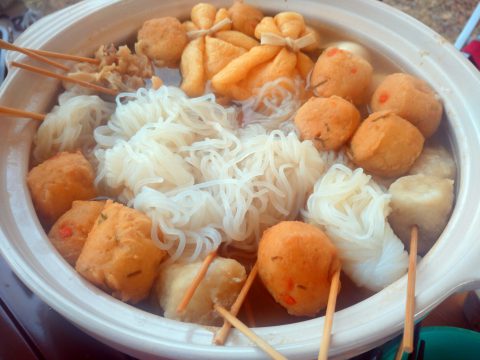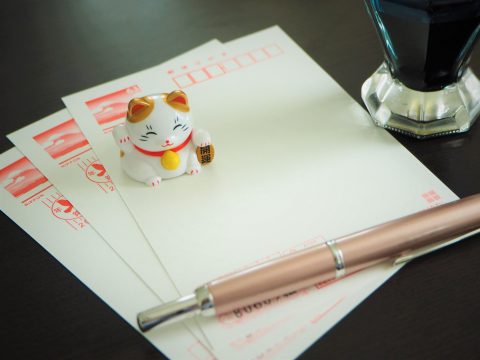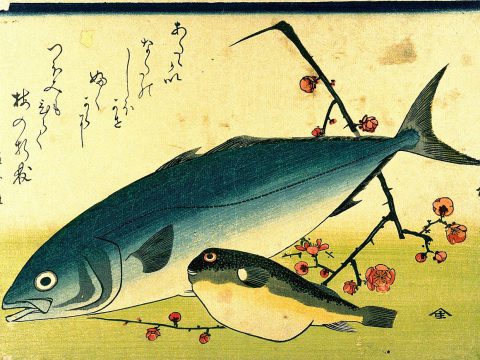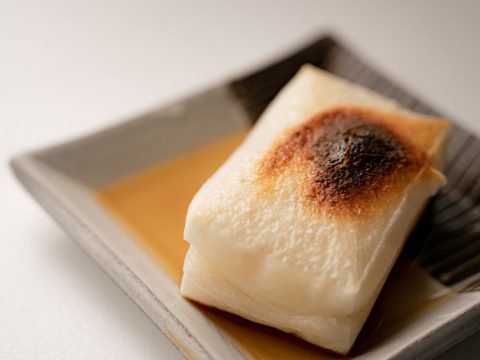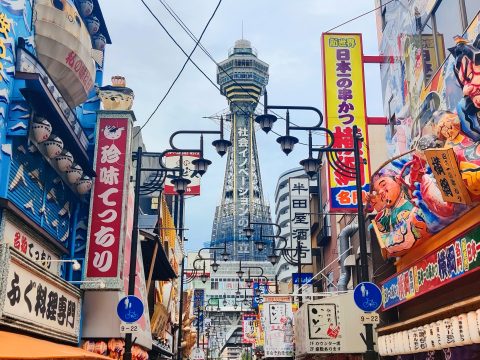Japanese Fish Eggs(魚卵)
JAPANESE FOODS
11.08.2022
The Japanese eat many different types of fish eggs (AKA roe). It’s a prized delicacy in sushi, onigiri rice balls, and various seafood and rice dishes. Not only does it add a pop of color, but it also adds texture and elevates any dish.
You can find these fish eggs in the seafood section of the supermarket seafood specialty stores. How many do you recognize?
Ikura いくら
Ikura is the roe of salmon and trout. It has a characteristic bright reddish-orange color and is perhaps one of the most well-known roes next to caviar. The roe is marinated in a sweet-savory sauce consisting of dashi (Japanese soup stock), soy sauce, and mirin (sweet sake for cooking).
The Japanese eat ikura raw or cured. In sushi, it’s eaten as a gunkanmaki (軍艦巻き, “battleship roll”) or used as a garnish on various seafood and rice dishes. The little jewel-like beads gently pop in your mouth, releasing a gooey and oily inside.

Sujiko 筋子
Sujiko refers to ikura clustered in the sac membrane. It has a darker reddish color and is sold as the entire membrane or in sections. The sac membrane is weak with immature eggs, so loosening it is difficult. Thus, it’s seasoned and sold as is. Sujiko has a deeper umami flavor than ikura, has a stickier texture, and tends to be slightly more expensive.

Tobiko とびこ
Tobiko refers to flying fish roe. The colorful tiny fish eggs are a garnish for sushi and various seafood dishes. It has a delightful crunch and bursting sensation in your mouth. The color is usually orange, but you can find tobiko dyed in green, yellow, and black. Like ikura, it’s marinated in a sweet-savory sauce.

Masago 真砂
Masago looks similar to tobiko and is the roe of Atlantic and Arctic fish. Like its name Masago (“true sand”) suggests, it has a grainy, sandy texture without a crunch. Masago is a cheaper seafood product than tobiko but is also used as a garnish.

Tarako 鱈子
Tarako (“children of cod”) is salted cod or pollack roe. It’s seasoned and sold in the sac membrane and resembles short oblong sausages. The color ranges from nude to pink. Tarako is eaten raw with rice or as an onigiri ingredient, tossed with spaghetti for wafu-pasta (Japanese-style pasta dishes), or grilled.
Tarako is also eaten in Korea and Russia.

Mentaiko 明太子
Mentaiko is tarako cured in powered chili peppers and spices. It’s spicy and eaten similarly to tarako. It originated from Korea and was brought over after WWII.
Kazunoko 数の子
Kazunoko is herring roe marinated in dashi soy sauce. Mustard yellow in color, it’s marinated and sold in the sac. The roe is tinier than masago or tobiko, with a crunchy texture and a salty, fishy flavor.
While it’s available year round, it is one of the popular dishes eaten during Oshogatsu, the Japanese New Year. The delicacy symbolizes a prosperous family and wishes for many children and grandchildren.

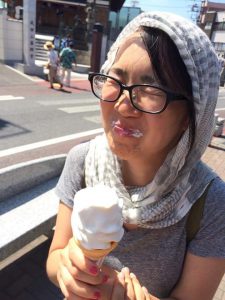
Kayoko Hirata Paku
Kayoko Hirata Paku is a food writer, translator, and bagel person. Growing up in Japan and the U.S., she currently resides in Tokyo with her peanut butter addicted husband, a very hungry baby, and many half-dead plants.
Read previous articles by the writer
Read latest articles
KEYWORDS
- # PICKPICK
- # Resume
- # alcohol
- # Rice
- # Soup
- # winter food
- # Fast Food
- # seafood
- # spicy foods
- # raw food
- # fermented food
- # Transportation
- # MEAT
- # Edo culture
- # suits
- # clothing
- # drink
- # fish
- # seasoning
- # Japanese New Years Foods
- # Toshikoshi soba
- # Osechi Ryori
- # Ozoni
- # Christmas
- # Japanese fusion pasta
- # Wafu Pasta
- # Japanese Hot Pot
- # なべ
- # 鍋
- # Miyazaki
- # Chicken Nanban
- # Karamen
- # Autumn Wagashi
- # Mushi-yokan
- # Imo-yokan
- # Japanese Autumn Fruits
- # Autumn
- # Vending Machine
- # fall
- # dango
- # Chestnut rice
- # saury
- # Mushroom
- # Rice vinegar
- # Japanese condiments
- # 調味料
- # Sake
- # Mirin
- # Soy sauce
- # Japanese Noodles
- # Udon
- # Ramen
- # Yakisoba
- # Soba
- # Japanese Seaweed
- # 海藻
- # かいそう
- # Payslip
- # Training
- # Japanese summer foods
- # 和菓子
- # Wagashi
- # ryokucha
- # 夏
- # 飲み物
- # Ramune
- # ラムネ
- # Pokari Sweat
- # ポカリスエット
- # Calpis
- # カルピス
- # Mugicha
- # ume
- # 梅
- # うめ
- # umeshu
- # job hunting
- # tofu
- # Recruitment in Japan
- # miso
- # Japanese cuisine
- # Yellowtail and bonito
- # Children’s Day
- # Kashiwa Mochi
- # Chimaki
- # fruits
- # Kusamochi
- # Types of Agriculture in Japan
- # bread
- # パン
- # パン屋さん
- # japanese bread
- # shokupan
- # meal blead
- # anko bread
- # 桜
- # さくら
- # cherry blossom
- # visa
- # hanami
- # omotenashi
- # sakura
- # おもてなし
- # Japanese hospitality
- # oshibori
- # wet hand towel
- # hand towel
- # restaurant
- # Commuting in Japan
- # Women-only cars
- # Exit gate
- # japanese train
- # train
- # valentine
- # Japanese sweets
- # 朝食
- # Japanese Breakfast
- # Breakfast
- # Japanese
- # 日本
- # healthy
- # persimmons
- # hoshigaki
- # HR
- # work in Japan
- # jinji ido
- # corporate systems
- # Japanese work culture
- # bento
- # ekiben
- # shinkansen
- # omiyage
- # train station
- # Japanese culture
- # work culture
- # mentaiko
- # umeboshi
- # Japanese snacks
- # potato chips
- # Japanese potato chips
- # Japanese writing
- # seaweed
- # konbu
- # ocean foods
- # shio konbu
- # dashi
- # miso soup
- # food processing
- # pear
- # nashi
- # sweet potato
- # japanese sweet potato
- # stingray
- # satsuma imo
- # food value chain
- # homecooking
- # agriculture
- # Japanese homecooking
- # farming
- # nikujaga
- # shojin ryori
- # meat and potatoes
- # traditional foods
- # comfort food
- # buddhist food
- # manufacturing
- # factory
- # eihire
- # vegetarian
- # food and beverage
- # izakaya
- # yatai
- # japanese festival
- # taiyaki
- # matsuri
- # summer
- # Ikayaki
- # smart agriculture
- # shaved ice
- # kakigori
- # かき氷
- # summer dessert
- # Japan
- # Japanese foods
- # dessert
- # fruit
- # matcha
- # icecream
- # Pikcup
- # Pikc up
- # Pcikup
- # skilled labor visa
- # working visa japan
- # Dineer Table in Japan
- # Japanese manner
- # Japanese food
- # Japanese Table Manner
- # Chopsticks
- # Japanese traffic signs
- # traffic information
- # road rules in Japan
- # chocolate
- # green tea
- # Osaka
- # Work Japan
- # Japanese company
- # ikura
- # sushi
- # nigiri
- # wasabi
- # PCIK
- # PICK UP
- # PICK
- # PICKUP


